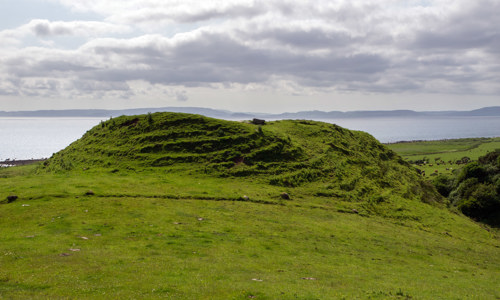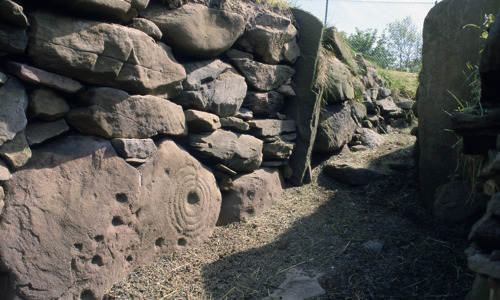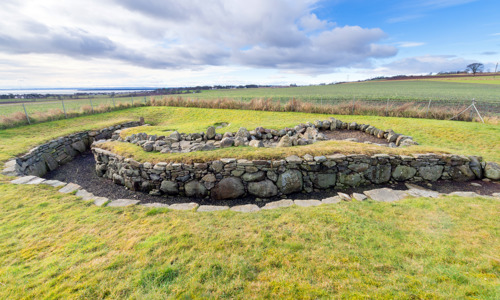History
Rispain Camp was built and inhabited between 100 BC and AD 200. It was inhabited by a local tribe known to the invading Romans as the Novantae.
Its name may derive from the Old Welsh word rhwospen, meaning ‘the chief of the cultivated country’ – an appropriate name for this Iron Age farm.
The rectangular area within the defences measures about 70m by 50m. It’s surrounded by earthworks including:
- an impressive double rampart
- a ditch, originally 6m deep
- an entrance causeway along the north-east side
Excavations in the 1970s and 80s revealed remains of a large timber gate at the entrance. Within the enclosure were three timber round houses. One was excavated, and found to be about 13m wide and of ring-groove construction.
The camp’s defences have remained so well-preserved that, until the excavations took place, archaeologists believed the site to be a Roman fortlet or medieval manor-place.
















